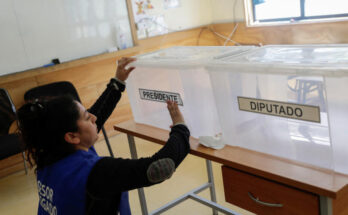Teenage girls don’t have it easy. While it is true that, as the latest ESTUDES survey published at the beginning of November highlights, it seems that their health is better than ever thanks to the reduction in alcohol, tobacco and cannabis consumption, it does not seem that they can avoid the mental health crisis that permeates our current context. Although their habits have improved, many girls struggle to feel sufficient in an increasingly demanding environment. This is indicated by various investigations in recent years, such as a study conducted in 2023 in Sweden —The association between adolescent self-esteem and perceived mental well-being in Sweden over four years of follow-up— who concluded that low self-esteem in adolescence has a medium-term impact on mental well-being, especially in girls; or the one made in Spain in 2024 —Self-esteem levels in a representative sample of Spanish adolescents: analysis and standardization– who observed that boys have higher self-esteem than girls, especially early in this stage of life.
“Self-esteem in boys and girls, in addition to being unstable, is very sensitive to external vision,” explains Sara Desirée Ruiz, social educator specializing in adolescence and psychotherapist. According to the expert, this is built on the basis of social acceptance, that is, the value we believe we have based on the way others perceive and evaluate us. During adolescence this construction becomes particularly sensitive to the opinion of the environment. An environment profoundly marked by social networks, which even intensify this dependence on external recognition: I likecomments or views act as digital equivalents of social recognition, expanding the number of glances and judgments that previously only came from the immediate environment.
Elena Daprá, health psychologist and director of the center that bears her name, says in this regard that many adolescents confuse personal value with digital visibility and in consultation she sees that this generates great emotional fragility: “When approval drops, their perception of value also drops. They learn to love themselves only if the environment approves of their image, not for who they really are.” This impact of social networks on self-esteem, and therefore psychological well-being, occurs especially among girls, Daprá argues. “The 2025 study Teenagers, TikTok and Instagram: perceptions on the impact of digital technologies on their social life, prepared by researchers from Pompeu Fabra University and the Open University of Catalonia, concludes that they make more intensive use of social networks, but, in addition, they feel more pressured by the image and physical appearance that is projected onto them,” he adds.
THE influencers They serve as a mirror in which adolescents compare their worth, image and interests with the most accepted models of success and beauty. However, Ruiz emphasizes that influence is not bad in itself: it can be healthy if creators show diversity, authenticity and vulnerability, offering real and consistent references. That is to say: they can strengthen identity and group belonging, two key aspects of this phase. The problem, according to the expert, is the lack of critical thinking and support from adults to help young women interpret the content they consume.
Laura Ferrer, social educator and specialist in sexual and emotional education, shares her opinion. He adds that another negative aspect is early sexualization which causes idealism in some influencers in networks and series that promote hypersexual attitudes. “This sexual projection increases the vulnerability of young women onlineexposing them to inappropriate interactions, harassment, or adult content, which puts them at greater risk of abuse or groomingpractice in which an adult establishes a relationship of trust with a child or adolescent with the ultimate aim of sexually abusing…”, underlines.
One of the frequent difficulties that the educator observes increasingly in girls it is about discomfort or body dissatisfaction. “Girls see it as a personal failure with thoughts like ‘I’m not skinny enough’ or ‘I’m not attractive enough.’” Ferrer points out that this aesthetic pressure and sexualization are key triggers of eating disorders (ED), body dysmorphia or social anxiety. “The pressure is not just to be attractive, but to fit a very specific, hypersexualized appearance: a thin body, defined curves, childlike but sexualized facial features, provocative makeup and clothing at an early age…”
Educate towards less dependence on external approval
Ruiz warns that adolescent girls imitate models that they perceive as rewarding – gestures, clothes, attitudes – to feel part of the group. Therefore, rather than banning or censoring, it is considered necessary to educate and accompany young women through dialogue so that they understand the origins of these dynamics and develop a self-esteem less dependent on external approval. “It’s interesting to help them understand that their body is part of their identity, but it doesn’t define its value. The goal is to teach them to take care of their body starting from health and well-being, not just aesthetics,” he explains.
“Therapeutic work involves rebuilding the connection with oneself, beyond digital reflection,” says Daprá. Like Ruiz, he believes that anything that promotes critical thinking and self-knowledge works: teaching people to question what they see, who is given authority, talking about the difference between image and reality, and, above all, reinforcing achievements that are not visible on a screen.
Ferrer proposes several tools to protect young people’s self-esteem and mental health from the impact of social networks. The creation of workshops to dismantle filters, Photoshop and editing applications stands out, to demonstrate that idealized images are unreal and therefore reduce social comparison. He also finds it helpful to teach how algorithms work and how they manipulate emotions, which helps reduce guilt or feelings of failure when you don’t receive external validation. It also recommends stopping following accounts that generate anxiety or comparison and replacing them with positive content that promotes diversity, body positive authentic, humor, art or learning. This, she says, helps normalize different body types and lifestyles, reducing aesthetic pressure. And he suggests establishing limits of use, such as areas without screens or specific times without networks, to encourage connection with real life and strengthen sources of self-esteem beyond the image. online. It also invites you to use networks creatively, sharing passions or knowledge instead of just consuming content, which strengthens self-efficacy and personal confidence.
Finally, for the experts consulted, it is essential to encourage emotional conversation: to know how they feel when they compare themselves, what they believe they are worth beyond the networks. A dialogue that should be promoted both within the family and in educational centers. For Ruiz, “it is everyone’s responsibility to help them understand that their value does not depend on the gaze of others, but on who they are and how they feel about themselves.”



